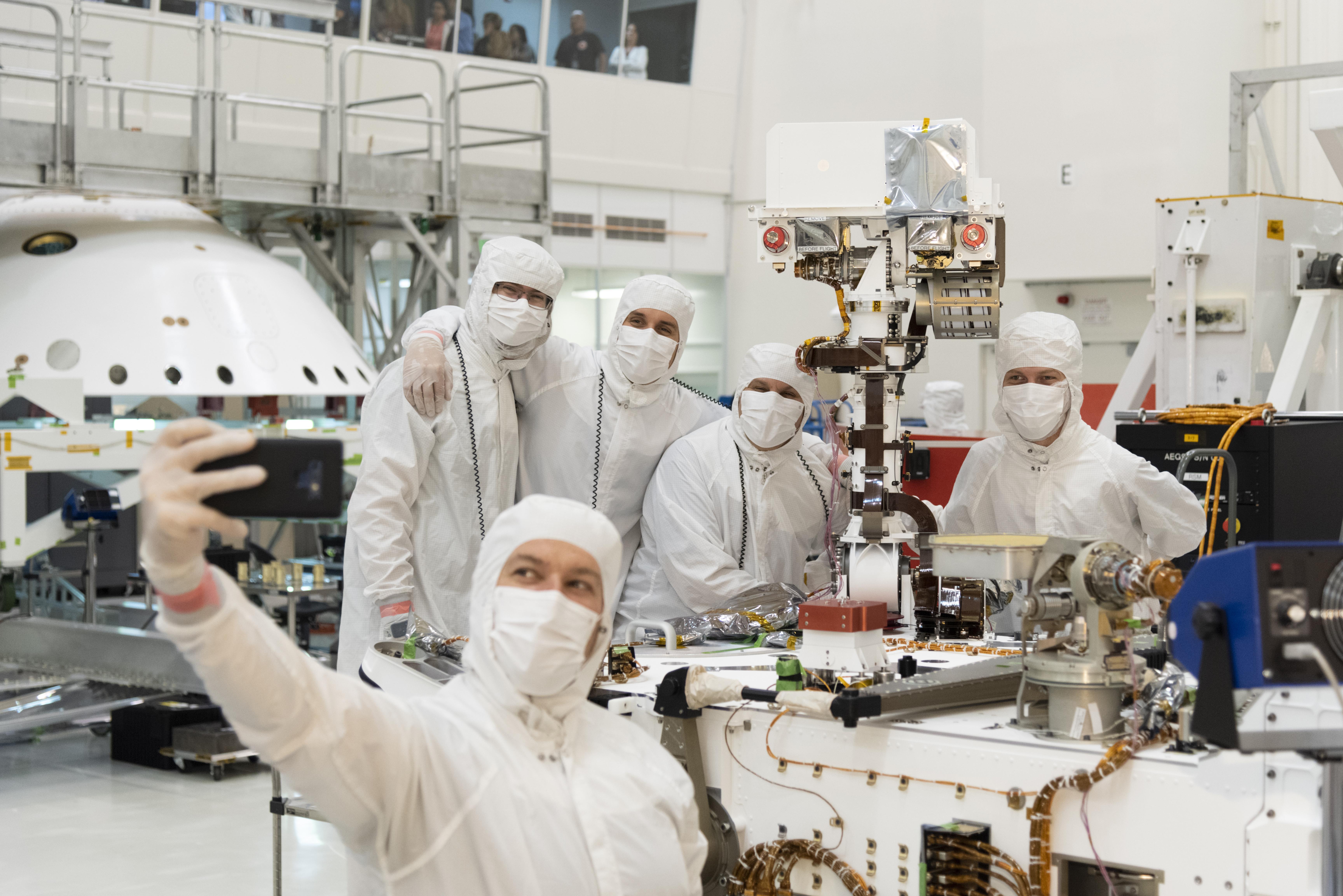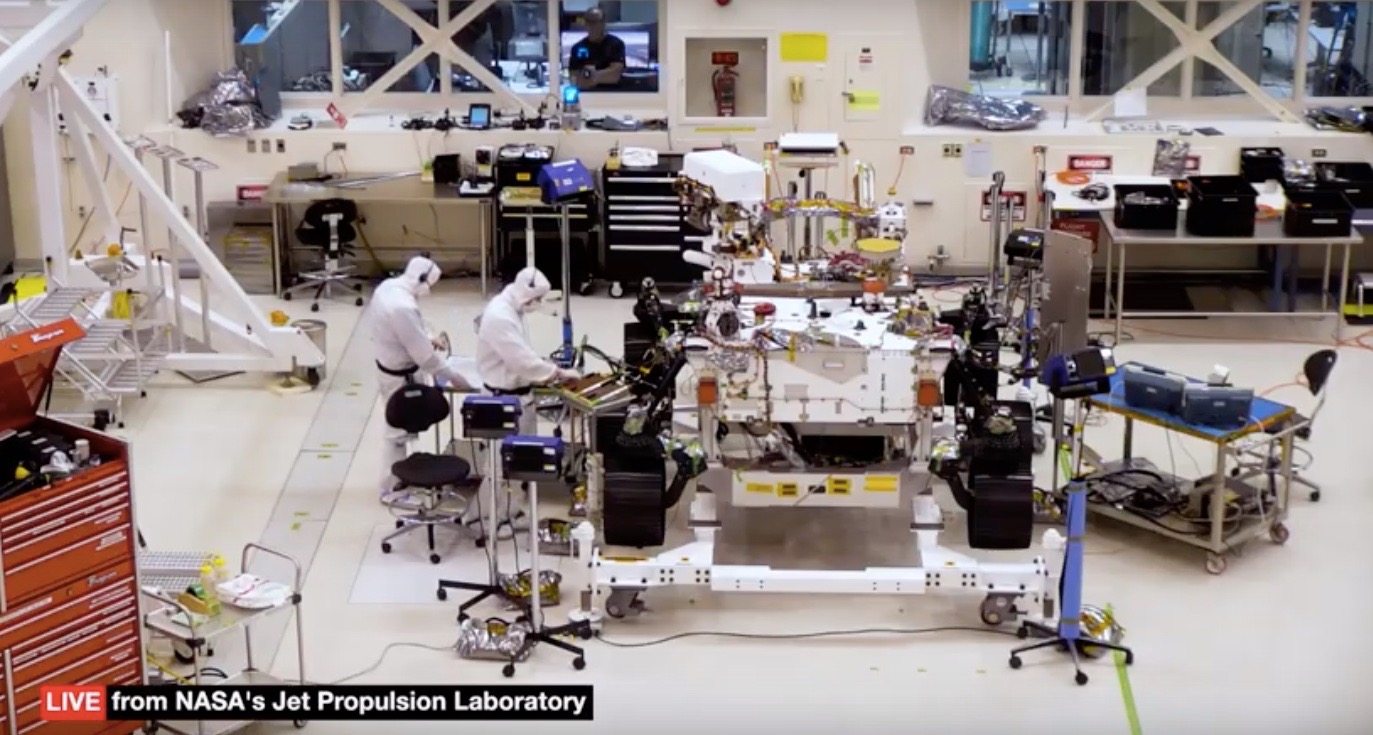
NASA's next Mars rover is really starting to come together.
Engineers at the agency's Jet Propulsion Laboratory (JPL) in Pasadena, California, have installed the headlike mast on the Mars 2020 rover, which is scheduled to launch toward the Red Planet in July of next year.
The robot also now has a suspension system and a set of wheels, both of which were put on Thursday (June 13). The suspension system is permanent, but the wheels will eventually come off; they'll be replaced by the flight models after Mars 2020 makes it to Florida, JPL officials told Space.com via email. (The rover will launch from Cape Canaveral Air Force Station, on Florida's Space Coast.)
Related: NASA's Mars Rover 2020 Mission in Pictures (Gallery)

Engineers attached the instrument-packed mast on June 5 in a JPL clean room.
"Full integration of the mast — a process that includes installation of science instrument sensors, electrical wiring and checkout — continued into the following week, concluding on June 11," NASA officials wrote in a statement today (June 14).
You can watch NASA engineers build the Mars 2020 rover live here, courtesy of JPL.
Get the Space.com Newsletter
Breaking space news, the latest updates on rocket launches, skywatching events and more!
The 7-foot-tall (2.2 meters) mast will travel to the Red Planet stowed flat against the car-size rover's body. The mast will be raised after Mars 2020 touches down inside Jezero Crater in February 2021.
Jezero hosted a river delta in the ancient past. Mars 2020 will characterize the geology of the area, hunt for evidence of long-dead Red Planet life and perform a variety of other science work. The six-wheeled robot will also collect and cache samples for future return to Earth, though no retrieval mission is on NASA's books as of yet.
Mars 2020 will also test a variety of new exploration technologies. For example, a tiny helicopter will travel with the rover, to help assess the reconnaissance potential of rotorcraft. And one of Mars 2020's instruments will generate oxygen from the Red Planet's thin, carbon dioxide-dominated air — technology that would obviously be useful for future human pioneers.
- Mars 2020: The Red Planet's Next Rover
- Amazing Mars Photos by NASA's Curiosity Rover
- Photos: Ancient Mars Lake Could Have Supported Life
Mike Wall's book about the search for alien life, "Out There" (Grand Central Publishing, 2018; illustrated by Karl Tate), is out now. Follow him on Twitter @michaeldwall. Follow us on Twitter @Spacedotcom or Facebook.
Join our Space Forums to keep talking space on the latest missions, night sky and more! And if you have a news tip, correction or comment, let us know at: community@space.com.

Michael Wall is a Senior Space Writer with Space.com and joined the team in 2010. He primarily covers exoplanets, spaceflight and military space, but has been known to dabble in the space art beat. His book about the search for alien life, "Out There," was published on Nov. 13, 2018. Before becoming a science writer, Michael worked as a herpetologist and wildlife biologist. He has a Ph.D. in evolutionary biology from the University of Sydney, Australia, a bachelor's degree from the University of Arizona, and a graduate certificate in science writing from the University of California, Santa Cruz. To find out what his latest project is, you can follow Michael on Twitter.









